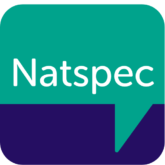A tool for evaluating efficacy of a therapy intervention, suitable for use across disciplines and client groups.
Further information about EKOS can be found here or by emailing Philippa Hardy, Joint Clinical Operational Manager and Professional Lead, Adult Speech and Language Therapy, at pip.hardy@nhs.net
Overview
Created by Johnson and Elias in 2010, the East Kent Outcomes System (EKOS) is a nationally recognised framework which promotes transparent, client-focused, evidence-based care planning through routine case-management. It is designed to be used on a single or multi-disciplinary basis with the flexibility to support each service’s chosen aims and outcome indicators; as such, it captures and demonstrates clinical effectiveness, without limiting or dictating clinical practice.
EKOS “provides a framework for producing and evaluating individual treatment plans which draw on evidence-based clinical practice.” (Johnson & Elias 2010:6). It is a two-page form based on therapy goals. It allows for descriptive analysis, good reflective evidence-based practice and therapy planning. It also helps create a summary of what has been achieved during the course of the therapy intervention.
Purpose of tool
To evaluate efficacy of a therapy intervention, to ensure interventions are meaningful and can show progress, including linear progress. It is a sensitive tool and can pick up on seemingly small steps of progress.
Who is the tool for?
The EKOS can be used across disciplines or as an MDT tool. It can be used with different client groups, both in 1:1 and groupwork. The client and carer can be involved with setting and reviewing therapeutic aims. The EKOS can be used for joint working, e.g. physiotherapy and occupational therapy joint sessions.
Notes on use
- To include students of all levels and enable them to set their own goals, additional communication resources may be required to help the student understand where they are and where they’d like to be.
- Make sure the aims and objectives set are very clear and specific (SMART) to ensure that outcomes are meaningful. Choose the margins for achievement carefully, e.g. ‘X person will achieve this 50% of the time.’ Be realistic, but with enough challenge.
- Where aims and outcomes are specific, EKOS is able to produce quantitative data which stakeholders like to see; eg ‘80% of the students fully achieved their targets during the 6 week intervention program.’ There is also scope to include comments providing some qualitative data.
- As the goals are specific to a service, this tool cannot be used for the purpose of benchmarking across services.
Training
Training and purchasing the manuals do incur a cost but discounts are given if buying in bulk for whole teams. Accessing a more detailed training about how to use the tool helps improve the accuracy of the outcomes. No license is required.
References

